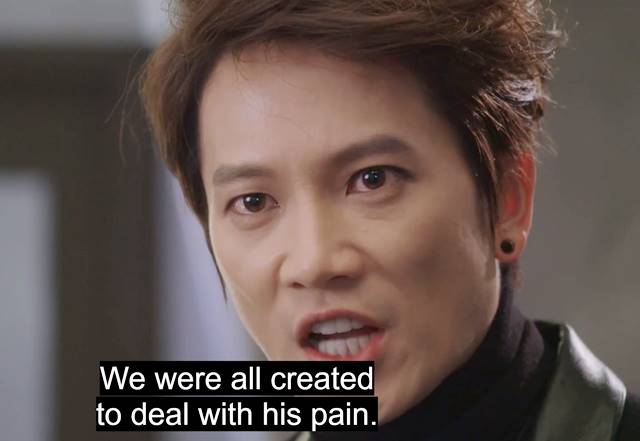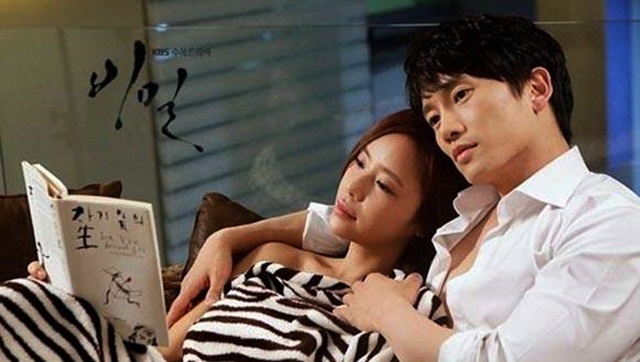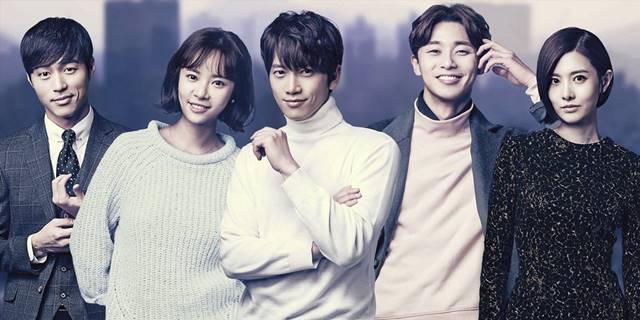By Jae-Ha Kim
jaehakim.com
March 28, 2019
![]()
Cha Do-Hyun (played by Ji Sung)
Oh Ri-Jin (played by Hwang Jung-Eum)
Oh Ri-On (played by Park Seo-Joon)
↑Note: Korean names denote the surname followed by the given name.
I finished watching the final episode of “Kill Me, Heal Me” early this morning, and I am left with a sense of melancholy — not because the ending was unhappy (it wasn’t), but because the series was so good I wanted to see more. This K-Drama unravels at a languid pace. As each new backstory is revealed, it felt like a jolt to my heart.
Full disclosure: It took me six months to watch all 20 episodes. I started with the first episode last fall, didn’t think much of it and put it on the back burner. It was my Twitter followers who insisted that I had to watch this and that I would love it. They were so very right. I was bingewatching right and left. So to all of you who nudged me, thank you!
Ri-Jin is a psychiatric resident. She meets a seemingly disturbed man named Do-Hyun, who asks for her help in treating his mental illness. He suffers from dissociative identity disorder and “lives” with six other personalities:
✔️ Shin Se-Gi: Looks like a rock star, fights like a MMA champion. He doesn’t allow Do-Hyun to be bullied. Also, in an unusual twist, he is the man stuck in the second lead syndrome.
✔️ Perry Park: A happy-go-lucky ajussi who loves fishing and has a knack for building bombs.
✔️ Yo-Sub: An artistic and sensitive high school boy who is suicidal. The series title comes from an incident where he writes, “Kill Me,” prior to his plan to commit suicide. Upon finding this, Ri-Jin changes his graffiti to, “Heal Me.”
✔️ Yo-Na: Yo-Sub’s twin sister. The 17-year-old loves K-Pop and handsome men, like Ri-Jin’s twin brother, Ri-On.
✔️ Na-Na: A 7-year-old who embodies the traumas Do-Hyun remembers from his childhood.
✔️ Mr. X: Looks like a magician. Behaves like a father.
Do-Hyun created each of these personalities to help him cope with the childhood trauma that he lived through.

Of course, as the heir to a huge company that he is expected to helm, his mental illness has to be kept a secret. Secrets always get out, though, especially in an office enviroment where no one seems to close the doors before having private conversations. 😬
I don’t want to give too much of the plot away, so I’m going to talk about what an outstanding job Ji Sung did in this series. With a few cosmetic changes, dialect and glint in his eyes, he literally became seven different characters. My favorites were Yo-Sub, Yo-Na, and Perry Park. They were three distinct characters, of different ages and gender, and Ji literally became these characters. I also find it funny that some of the most handsome men make the most unattractive females, and such was the case with Yo-Na.
I never once found the personalities distracting. And when it was time for them to disappear, oh, the lump in my throat.
As Ri-Jin, Hwang Jung-Eum was feisty and sympathetic. And as her twin, Ri-On, Park Seo-Joon was charming and protective. Their roles weren’t as flashy as Ji’s, but their characters were well fleshed out.
I’m not well versed in psychiatry, so I hope those of you who are will chime in if I’ve gotten anything incorrect. But I really appreciated the lengths that the writers went to present mental health as an important disease that can and should be treated, rather than as a weakness or — even worse — a freak show.
While “Kill Me, Heal Me” wasn’t as nuanced as “It’s Okay, That’s Love,” it was close.

The Adoption Element:
Adoption is handled relatively well in this series. Ri-Jin has a loving family that treats her no differently than their biological child. The parents are open about her adoption when she asks about it. However, it’s also obvious that they didn’t talk about it and had hoped she would just forget she was adopted. (Not an easy thing, since she was about six years old at the time she joined the Oh family.) What I really disliked was how it’s obvious that Ri-On has feelings for Ri-Jin, not just as a brother, but as a potential romantic partner. To the writers’ credit, they had him verbalize that because they grew up as siblings, this is not something he should pursue (especially since Ri-Jin only thinks of him as her brother). I’ll add a bit more about this in the spoilers below.
Airdate: Twenty hour-long episodes aired on MBC from January 7 to March 12, 2015.
Spoiler Alert:
Ri-Jin was born as Do-Hyun. Do-Hyun was born as Ye-Joon. To avoid confusion, I will refer to each by the name they called themselves as adults. Throughout the series, I worried that they were biologically related, but they both had different sets of parents. Ri-Jin’s mother was married to Do-Hyun’s father. But they had a loveless marriage and divorced — or thought they did (the papers were never finalized). During the six years or so that they lived apart, each had a child with a different partner. When his wife dies in a car accident, Do-Hyun’s father has to decide what to do with her daughter, Ri-Jin. Not wanting to announce to the world that his wife had a child out of wedlock (even though he had done the same thing), Do-Hyun’s father does the only reasonable thing any sane adult would do: He locks the little girl away in the cellar. 😒 But wait, it gets even better. When Do-Hyun misbehaves or does something to displease him, the father beats…the little girl.
Around this time, Do-Hyun creates Se-Gi to cope with what is happening. He feels responsible for Ri-Jin’s miserable life, even though he is just a small child with no power. Listening as Ri-Jin is beat again simply for not being his own biological child, Se-Gi emerges and sets the cellar on fire. The father saves Do-Hyun but leaves Ri-Jin to die. She is rescued by one of the house cooks, who will eventually adopt her. Since too many people knew there were two children living in the house, they make it so that Do-Hyun takes over Ri-Jin’s identity. (In Korea, children are registered on the family hojeok.) Ri-Jin had already been registered on the hojeok. Do-Hyun hadn’t been registered yet. Legally, he is now the only child who exists.
In the final episodes, the scriptwriters began to manipulate viewers’ heartstrings, showing the father waking up from having been comatose for decades. The man wants to see both of them to beg for their forgiveness. Aw hell no! To the series’ credit, neither accepted his apology. Ri-Jin said that if they ever choose to forgive him, it will be for their own peace of mind, and not his.
This kind of abuse wasn’t the result of just one man. He was enabled by his mother, who didn’t stop him, employees and a staff of servants, who all kept their mouths shut and made no attempt to report his abuse. I know that the servants had no power — and they probably needed their jobs to survive. But at some point, you have to decide whether you can live with yourself, knowing that a child is being tortured in the same house where you work.
As for the adoption element… Ri-On wrestles with his romantic feelings for Ri-Jin. He tells Do-Hyun that if Do-Hyun’s father had done the right thing and raised both children as his own, Do-Hyun would’ve grown up as Ri-Jin’s brother. And then he (Ri-On) could’ve had the opportunity to woo Ri-Jin as a partner. But that’s not possible now, because of how they all grew up. I’m so relieved that they didn’t try to force a relationship between a brother and his adopted sister.
One of the best #KDramas I’ve seen, #KillMeHealMe brilliantly tackles the aftermath of childhood trauma & how it mentally breaks you down. #JiSung is nothing short of amazing, tackling a script that didn’t make a freak show out of mental health. My review▶️https://t.co/VYBS4K3XJe pic.twitter.com/bOM2TFgO5g
— Jae-Ha Kim 김재하 (@GoAwayWithJae) March 28, 2019
© 2019 JAE-HA KIM | All Rights Reserved







This one is close to my heart. The way it tackles the stigma that surrounds mental health and seeking help for it, is commendable. Ji Sung does immense justice to make the viewers feel his pain and agony.
Thank you for reviewing this drama. Your reviews never fail to amaze me.
This will be on my “to watch” list! Also, I didn’t even question the BTS photo. Didn’t even think it was weird at all. 😁